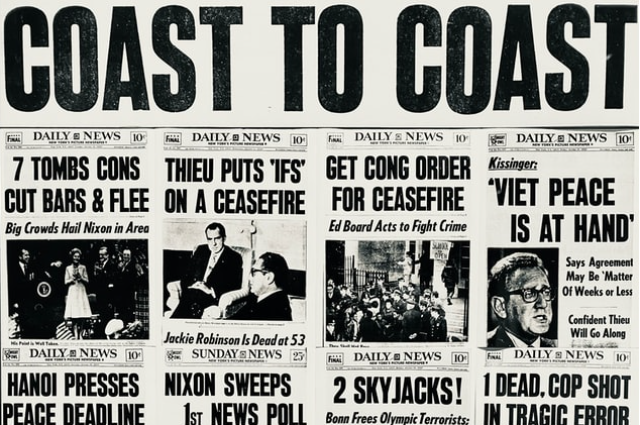
"There is no greater agony than bearing an untold story inside you"
– Maya Angelou
We all have stories to tell, and experiences to share. Numerous people often wish to pen down these little experiences and share them with the world. These are unexplored, untold, overlooked tales in a compelling narrative, which go unnoticed most of the time. They involve someone's loving childhood, the strains of youth, some real-life stories, pieces of fiction, or some tremendous amount of knowledge that a person can have on any subject. However, when a person writes down these experiences, knowledge, or whatever in their mind, life happens, and a gateway to something more influential, something that matters, unfolds broadly. And that's why, beginning somewhere is quite powerful. But where do you begin? The initial step is determining a platform that will support you to reach your purpose to write about something, or to flourish as a writer. And People's Reflections recognize the people who write and invite them to express their views on varied topics.
Everyone has something to share, which can be an idea, an opinion, some real or fictional stories, or anything else that a human mind can think of. People's Reflections firmly believes in giving equal opportunities for everyone to express such views. Yet, it is very important to correctly show your writeups or articles to your audience. One of the beneficial tips to enhance your article writing is by writing practice and by reading other writers. And when we talk about reading other writers, you should regard the writing style and the format of their articles.
To make your article stand out of the crowd and reach the maximum audience, some basic format for article writing is quite significant.
And now it's time to jump on these major aspects of the article writing format.
Is the Title of your Article so Important to your Writing Success?

If you are dedicated to spend hours creating outstanding content, we advise you to spend maximum time selecting outstanding words for your title along the side. In other words, if your content is out of the world but, the title is poor, the obvious consequence is that you cannot invite readers organically. We believe that the first impression is crucial and search engines like Google, Yahoo, Bing take this quite seriously.
Renowned writer J.K. Rowling has said, "A good first impression can work wonders". We make our first impression with our appearance and body language, but our stories do it with their Titles. Thus, titles hold a notably striking position in an article. A title creates awareness, expectations, but disinterest as well in some cases. Based on such components of an article, a user is likely to click on the search result. It's a fact that your ranking of Google and other search engines is based on your title and subtitle.
The title should be engaging, and it requires to correlate to the content of the article. Try to pull all the important aspects in the title using as few words as possible. It is advisable that the length of the title should not cross 5-6 words, if possible. A topic that is too long will appear clumsy, disturb readers, and not meet the search engine requirements.
The title indicates the central theme of an article through limited words. Though it takes a fraction of time to write, it's a starting point and thus, should have a strong influence on the readers. Try to look for something that interacts with the story in an interesting way. Write your title in such a way that your audience should have an urge to continue reading your article.
Following are some Examples of Effective Titles:
- 10 Steps to Successfully Outsourcing your Online Business
- Parenting Guru: From Chaos to Access
- This is the Smartest Stock to buy if the market crashes
- The Best Productivity Habits of Famous Writers...!
- How to cook mouth-watering Indian curry?
What Role does Subtitle play in Approaching Potential Readers?
The subtitle is a substitute headline that provides a further description of the title. It can be taken from the original content of your article. Both title and subtitle act collectively to create interest and inform the readers what the article is all about.
Choose a short phrase that summarizes the key approach of your content.
The subtitle should be reasonable and let your audience know what they should expect in your content.
Following are some Examples of Effective Subtitles:
- Title: To Do Better Work, Use Pen and Paper
Subtitle: Why writing by hand makes you more creative and productive - Title: 5 Social Media Content Hacks to Skyrocket Your Growth Subtitle: Feeling uninspired by your social media content lately, both on the paid and organic fronts? It happens more than you’d think.
- Title: How to Practice Gratitude While Cooking, Doing Laundry, and Commuting
Subtitle: Mindfulness practices can make your most dreaded daily chores into meditations - Title: Love, Life and Beer
Subtitle: A love poem - Title: The 'Gig' way is the Highway!
Subtitle: Why remote working or work from home is here to stay even after we get over the pandemic
All about the Main Body of the Article
The main body of the article is where you write the article in more inclusive detail. An article should have a body that explains the topic, and other paragraphs that explain the point in an extensive form.
Your introductory section is quite important in the article. The first paragraph should give a precise explanation of the article's central theme, which should also engage the audience in the first snap.
What should be the ideal length of your article is a much confusing question for all the writers. Whether it should give justice to the title of the article or it should be short and sweet. When it comes to the length of the article, one should bear in mind the quality and not the quantity of the article. One should think to optimize the impact of the article on the readers' minds.
The ideal length of the article is between 1500-2000 words, whereas, as per Neil Patel the content ranging between 3000 to 10000 words is shared more on social media, rather than the content ranging between 500-1500 words. Yes, it is true that maximum time, the length depends upon the topic on which you are writing. Sometimes, the length doesn't matter as the topic is such that it has to be in detail. But, sometimes, if the topic is not that effective, the author should not stretch it unnecessarily.
Let us not confuse you further, but, according to 'Google Search', the standard length of the article should be between 1500-3000 words where people search maximum. The bottom line is, stick to your commitment given in your title and deliver the article accordingly.
The body of an article should elaborate on the topic while the closing section must carry a summary and the author's conclusion on that subject. Besides, an article should have the author's perception of the topic. The concluding part must simply settle the article and meet all the relevant information.
To sum up:
- To engage readers in the discussion/ comments, the good length is 250-400 words;
- As suggested by experts, the standard length for any blog/ article is 500-700 words;
- A standard professional article on any website is between 750-1500 words; and
- Search engine compatible articles are generally ranging between 2500-3000 words where the probable solution to any issue is discussed at length and the topics people are searching a lot.
Prohibit Plagiarism
Plagiarism is basically utilizing someone else's work, concepts, and thoughts in your article.
Do not try to adopt someone's work without addressing them. You can quote someone, but the author must be named.
Plagiarism has some serious consequences, and it can put you in legal trouble with copyright infringement and other offenses. Hence, it is essential for you to understand this concept while writing your article or mentioning some quotes.
Is Proofreading Inevitable?

In proofreading, you read through your work to detect any mistakes. Minor and major flaws in spelling and grammar can simply be missed while writing, which is why proofreading is required to spot such mistakes.
Proofreading is the most beneficial method of writing an authentic article. If you don't aspire to reveal any mistakes in your article, you must proofread the whole piece after concluding it.
Your proofread phase is an excellent period to help you take out the fluff in your writeups. Just ask yourself whether a sentence expresses well, or does it make sense? Can you make your point in fewer words, without cutting your original meaning?
Repeated proofreading is forever suggested to create your most high-grade writing work.
Do Images really Impact your Article?
Scientifically, human minds can memorize visual impressions better than what is written. The images used in the article/ blog can play magic creating a secured and perpetual place in the reader’s mind. Sometimes, the images narrate the entire article and indeed create a deep impact on the reader’s mind.
Using a suitable and good image can certainly improve your article. A good image can build assurance of your information and engage the readers.
Attaching images that suit the distinct pieces of information in your article is important. And when you are selecting an image, you want to make sure that the image is enhancing the topic you are discussing.
Images should have a quality resolution that can boost the appeal of the article.
Uploading the proper size images is one of the most relevant aspects that can make the article look engaging in a conventional manner. Various cropping and editing tools can be used via different photoshop apps to upload a suitable and perfect image.
Align the images with the understanding of the flow of information in your article. Using a good image at the start of your article can be beneficial as well. However, it is important to look after the overuse of images, because too many images can overthrow an article's flow.
Another most essential factor is addressing the credits of the images used in the article. The image credits are a way to let readers know about the original creator of the image. Mentioning the image source indicates great faith and defends you from complex legal issues related to copyright. Some websites like Pixels, Unsplash, and Pixabay offer quality images for free. However, providing proper sources or references to the images that you are using is always preferable.
The Backbone of your Article: URL
Yes, in a real sense, URL is the backbone of your article. Without an effective URL, the article cannot stand out in Google and other search engines. URL is one of the key concepts of the web and it stands for 'Uniform Resource Locator'. URL consists of multiple parts that include a protocol and a domain name. It is the name of your resource online, and it is basically the web link of your content.
Creating an URL that is relevant, compelling, and easy to understand is considered very important. The article "Google's 200 Ranking Factor" by Backlinko, stated that URLs play a major role in raking a particular page. Although URLs cannot rank themselves, a keyword in the URL can improve ranking by providing better visibility. Thus, it is relevant to create URLs that express the content and not just attach keywords randomly.
A short URL with limited keywords is always the most beneficial method. It shouldn't be lengthy and has to be easy for users and search engines to understand what to expect from the URLs by simply taking a look.
An ideal URL will describe the web page and the content. It is important not to add any capital letters, numbers and special characters, and other unnecessary parameters in the URL.
Following are some examples of the effective URLs:
- https://www.semrush.com/blog/on-page-seo-basics-urls/
- https://neilpatel.com/blog/title-tags-seo/
- https://medium.com/blogging-guide/medium-custom-titles-and-subtitles-38097eaf95e6
- https://yoast.com/what-is-seo/
- https://www.writersdigest.com/be-inspired/jenny-bayliss-on-the-power-of-second-chances
What are Meta Keywords?
Meta Keywords are used behind the scenes of a website page to communicate information about the page to reach the different search engines on the web. You can choose some relevant important words from your article and use them as meta keywords. They can be some small important phrases as well. Any special characters like", #, $, %, -, +, [,], \, /; etc should not be used in these words.
Meta keywords were used to let Google and other search engines know which words related to the topic of your article were most relevant to the content on the web page. However, Meta tags have less or no value for search engines at the present time. Meta keywords were used by search engines from 1995 to 2009. And from 2009, a massive decline started in the utilization of the meta keywords. A few site searches still use meta keywords elements, but most of the big websites have totally removed the use of this factor.
Presently, search engines like Google, Yahoo, and Bing do not give much importance to meta keywords like they once did. Thus, rather than wholly focusing on keywords, more attention can be given to Title and Meta description, which have an extensive influence on the search engines.
What is Meta Description?

A meta description is a tag used to describe the content of a web page. This description will show up below the title and URL of your page as it appears in the search engine results. And since meta descriptions appear with your title and URL on the search results of pages, they have the power to help the result of showing your articles to maximum audience.
When some content appears on a web page, users see if it answers their query through title or description. A quality description can positively impact the number of people who click through the site. According to Neil Patel, pages with meta descriptions see an average of 5.8% more clicks than pages without. A quality meta description on the page can raise traffic and, engagement, improving the ranking on the web.
It is a helpful tool both for users and the search engine when it comes to SEO management. Search Engine Optimization (SEO) is a technique of getting pages to rank higher in search engines such as Google. It is very crucial to follow SEO techniques as 'Search' is one of the primary ways that we discover content on the internet. In recent years, search engines have emphasized more on meta description with a fitting SEO.
Now if you are thinking about the length of the meta description, it is crucial to notify you that staying within the meta description length will help to attract readers' attention better. It is important to stay within the character limit on the meta description length to avoid having part of your description, get cut off by the search engines, and appear incomplete on the webpage. According to Semrush, SEO specialists recommend using the 150–160 character range. You can try to use fewer characters than 150, but strictly avoid going over the 60-character limit, as search engines will cut it off.
Including the major keywords in the meta description is one of the most useful and easiest ways to convince the users and search engines that your page is relevant.
Writing a unique description and avoiding copies is another helpful way for creating great content. In fact, Matt Cutts from Google has said that 'It's better to leave them blank than to have duplicates'. Because copied or duplicate meta descriptions are not optimized for most pages.
Any special characters like", #, $, %, -, +, [,], \, /; etc. should not be used in meta description.
Following these steps can help you write your article swiftly and efficiently. Every search result by users switches according to the algorithms of search engines like Google and Yahoo. The search algorithm is a system that allows search engines to find, rank, and deliver the most relevant pages for a particular search query. And by focusing on significant factors like Title, URL, and Description, the content can be reached to the maximum users. Even if, these technical factors hold much water when it comes to rankings, the quality of your content is evenly powerful. In the end, it is essential to understand that your content is the central base on which all other factors are settled, and hence, it is necessary to focus on quality content.
Now you know how to begin to tell your stories to the world. If you experience and learn to write articles with a specific presentation, along with the knowledge of other formats, you will be able to increase the reader engagement for your stories and earn a reputation as a remarkable writer.
So now let the stories in your mind come out!
And if you have any queries related to writing, kindly write us at contact@reflections.live
